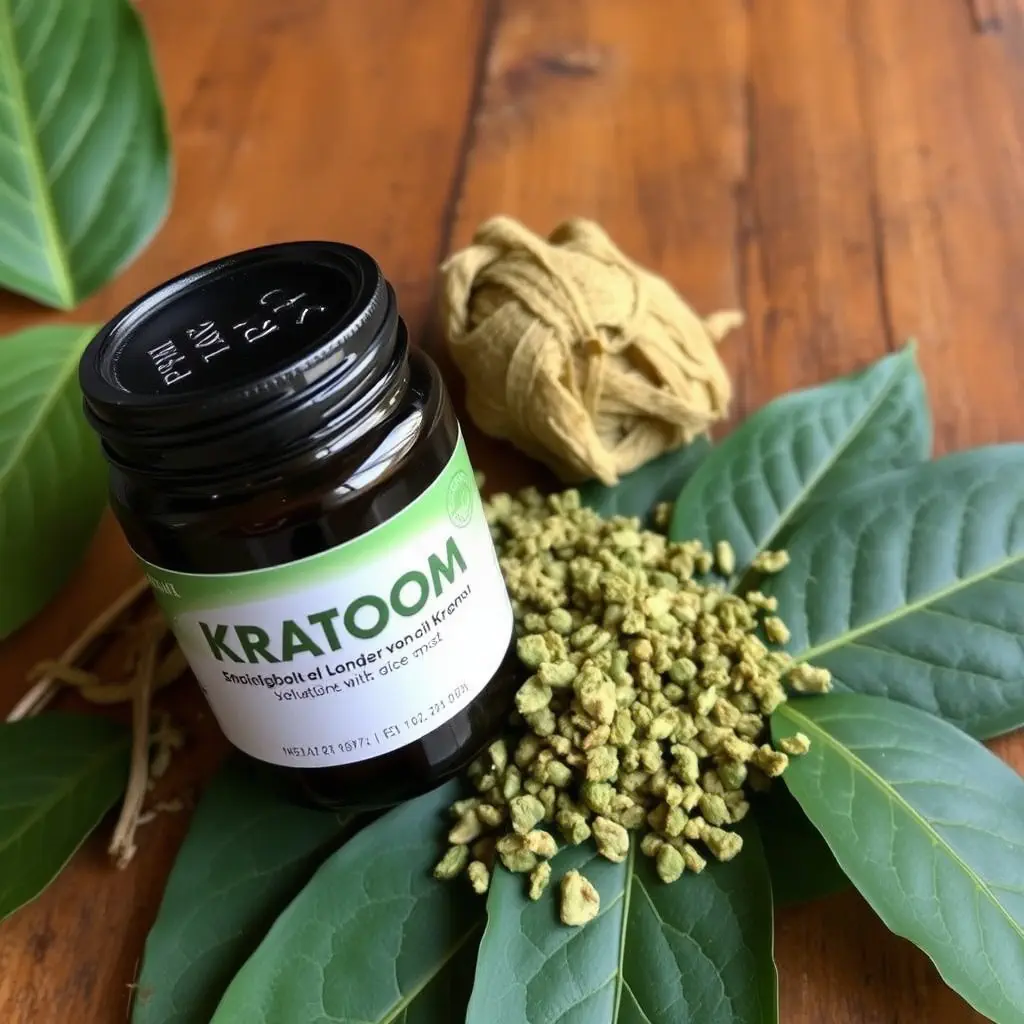When incorporating kratom into a workout routine for muscle soreness relief, it's crucial to consider individual health factors and the type of exercise. Kratom, derived from the Mitragyna speciosa tree, has been traditionally used in Southeast Asia for its potential pain-relieving and mood-enhancing properties. The optimal kratom dosage for fitness routines should be carefully determined, as it varies by weight, tolerance, and muscle soreness intensity. Typically, a starting range is between 2 to 8 grams, but users should begin with a lower dose to assess individual responses and avoid overconsumption. This approach should be complemented by safe exercise practices, including low-impact activities like yoga or swimming after kratom ingestion, as well as stretching or foam rolling for muscle relaxation and flexibility. Proper hydration, nutrition, and rest are also essential components of recovery and overall health. It's important to consult with a healthcare professional before using kratom to ensure it aligns with your health needs and promotes safe workout practices. Regular exercise contributes to health and well-being but can lead to muscle soreness, which may impede recovery. Kratom is thought to offer benefits for post-exercise recovery by potentially modulating pain perception and providing anti-inflammatory effects. However, it's essential to start with a low dose and gradually adjust according to individual response due to the variable alkaloid content in capsules. Always remember that kratom should be used responsibly within a balanced fitness regimen and in consultation with healthcare providers to avoid conflicts with other treatments or supplements.
Embarking on a fitness journey often leads to muscle soreness, a common experience that can impede progress and comfort. This article explores tailored workout plans enhancing recovery by incorporating Kratom, a natural substance gaining attention for its potential benefits in post-exercise relief. Discover how to effectively use Kratom with the guidance on ‘how many kratom capsules to take’ for individual needs, and learn to integrate this into your fitness regimen for optimal muscle health and comfort. Whether you’re an athlete or a casual gym-goer, understanding the role of Kratom in recovery can significantly aid in alleviating soreness and maintaining an active lifestyle.
- Crafting Personalized Workout Routines for Muscle Soreness Alleviation with Kratom
- Understanding the Role of Kratom in Post-Exercise Recovery
- Integrating Kratom into Your Fitness Regimen for Optimal Muscle Health and Comfort
Crafting Personalized Workout Routines for Muscle Soreness Alleviation with Kratom

Crafting personalized workout routines that incorporate kratom for muscle soreness alleviation can be a nuanced approach, requiring careful consideration of individual health factors and the type of exercise regimen. Kratom, derived from the Mitragyna speciosa tree, has been traditionally used in Southeast Asia for its potential pain-relieving and mood-elevating effects. When designing a workout plan with kratom for muscle soreness, it’s crucial to understand how many kratom capsules to take, as dosage can vary significantly based on an individual’s body weight, tolerance, and the severity of muscle soreness. Generally, the recommended dosage range for kratom capsules is between 2 grams to 8 grams; however, it’s essential to start with a lower dose to gauge the effects and avoid overconsumption.
Incorporating kratom into a workout routine should be done with caution and in conjunction with proper exercise techniques and recovery methods. For instance, engaging in low-impact exercises such as yoga or swimming following kratom ingestion can help alleviate muscle soreness while minimizing the risk of injury. Additionally, pairing kratom use with stretching or foam rolling can enhance muscle relaxation and flexibility. It’s also important to maintain proper hydration and nutrition, as these factors play a significant role in recovery and overall well-being. By tailoring workout sessions around the body’s response to kratom, individuals can experience targeted relief from muscle soreness, promoting a more efficient and enjoyable fitness journey. Always consult with a healthcare professional before integrating kratom into any workout regimen to ensure safety and effectiveness.
Understanding the Role of Kratom in Post-Exercise Recovery

Engaging in regular exercise is beneficial for overall health and well-being, yet it often leads to muscle soreness, which can hinder recovery and affect subsequent workouts. Understanding the mechanisms behind post-exercise recovery is crucial for optimizing athletic performance and minimizing discomfort. One natural substance that has gained attention for its potential role in recovery is kratom, a plant from Southeast Asia with alkaloids that may influence pain perception and muscle relaxation. When considering the use of kratom for post-exercise recovery, it’s important to focus on how many kratom capsules to take, as dosage can significantly impact its effects. Typically, users report beneficial outcomes from a moderate dose range, which is often between 2 to 5 grams of powdered leaf, depending on tolerance and individual physiology. However, when it comes to kratom capsules, the amount of alkaloid content per capsule can vary, necessitating careful consideration of the product’s specifications before determining the appropriate dosage. It’s essential to start with a lower dose and gradually increase it while monitoring your body’s response. Kratom is believed to interact with the opioid receptors in the brain, which may contribute to its analgesic properties, helping to alleviate muscle soreness and promote relaxation after intense physical activity. Additionally, some users find that kratom aids in reducing inflammation and improving sleep quality, both of which are important factors in recovery. As with any supplement, it’s advisable to consult with a healthcare provider before integrating kratom into your post-exercise routine, especially given the legal status and potential regulatory considerations surrounding its use. Proper hydration, nutrition, and rest remain foundational elements of effective recovery strategies, complementing the potential benefits of kratom for those looking to mitigate muscle soreness and enhance their recovery process.
Integrating Kratom into Your Fitness Regimen for Optimal Muscle Health and Comfort

When incorporating Kratom into a fitness regimen aimed at muscle health and comfort, it’s crucial to understand how this natural substance can complement your workout routine. Kratom, derived from the leaves of the Mitragyna speciosa tree, is known for its potential benefits in managing pain and inflammation, which are common after intense physical activity. For those considering Kratom as a supplement for muscle soreness relief, it’s important to start with a low dose to assess individual sensitivity. Typically, individuals may explore how many Kratom capsules to take by beginning with one or two capsules and monitoring the effects. This approach allows for personalized dosing without overwhelming the body. It’s essential to consider that the optimal number of capsules can vary based on factors such as body weight, tolerance, and the specific strain of Kratom used.
Moreover, integrating Kratom into a workout plan should be done with caution and in conjunction with proper fitness practices. Engaging in a balanced routine that includes both resistance training and cardiovascular exercise can contribute to overall muscle health while minimizing the risk of injury and subsequent soreness. When paired with Kratom, which is known for its stimulating and pain-relieving properties, individuals may find they can recover more quickly between workouts, leading to a more consistent and effective fitness routine. It’s always recommended to consult with a healthcare professional before adding any new supplement, like Kratom, to your regimen, ensuring that it aligns with your health goals and does not interfere with other medications or supplements you may be taking.
Muscle soreness can be a significant barrier to consistent workout routines, but with the right approach, it doesn’t have to halt your fitness journey. The article has explored the benefits of customized workout plans that incorporate kratom for muscle soreness relief. By understanding how kratom can aid in post-exercise recovery and integrating it appropriately into your regimen, individuals may find enhanced muscle health and comfort. When considering how many kratom capsules to take, it’s crucial to follow dosing guidelines and consult with a healthcare provider to ensure safe usage. In summary, a tailored fitness plan that includes kratom as part of the recovery strategy can be an effective method for managing muscle soreness and maintaining an active lifestyle.






